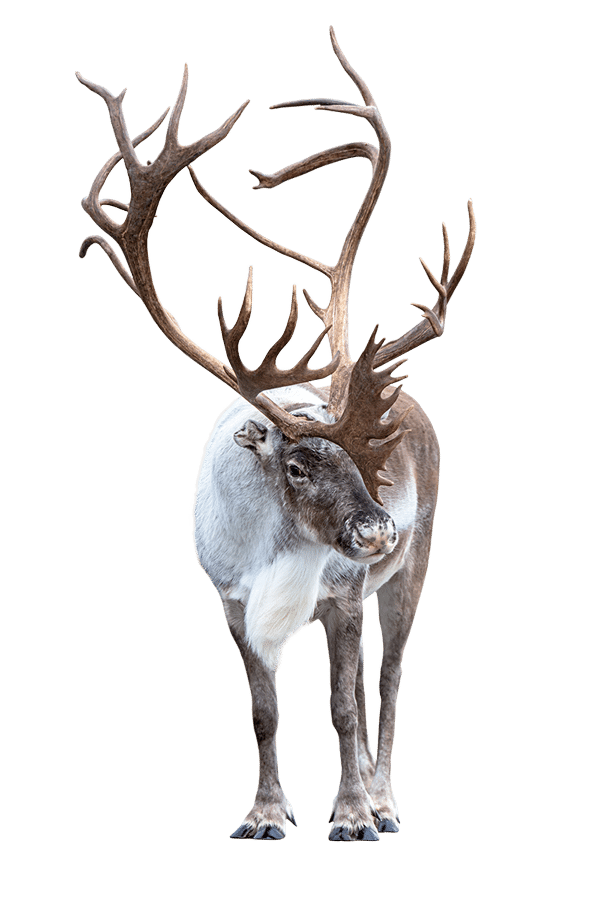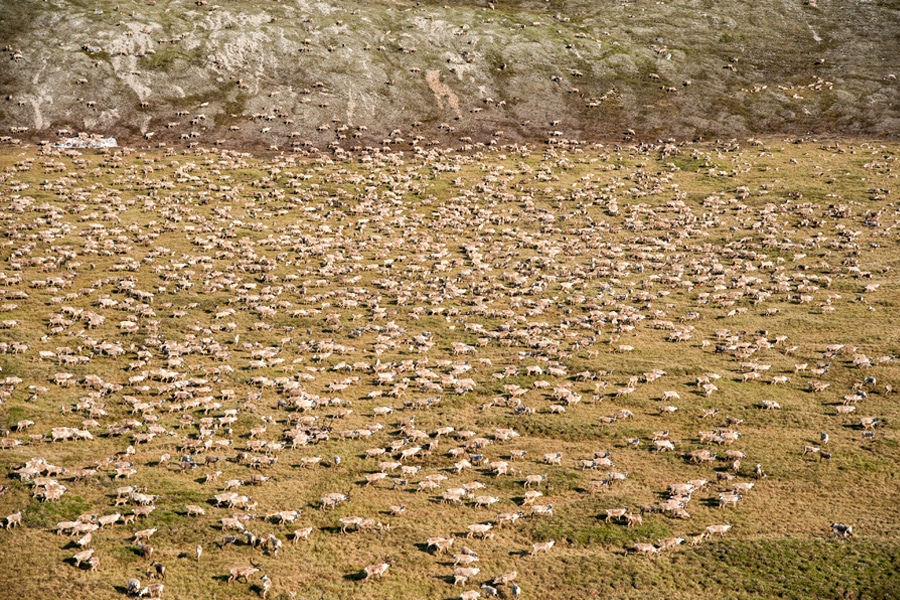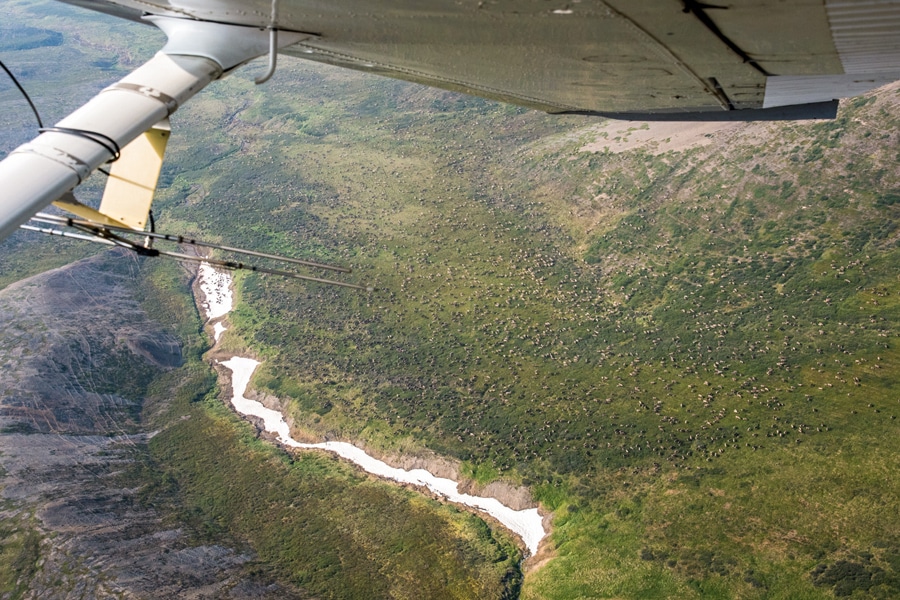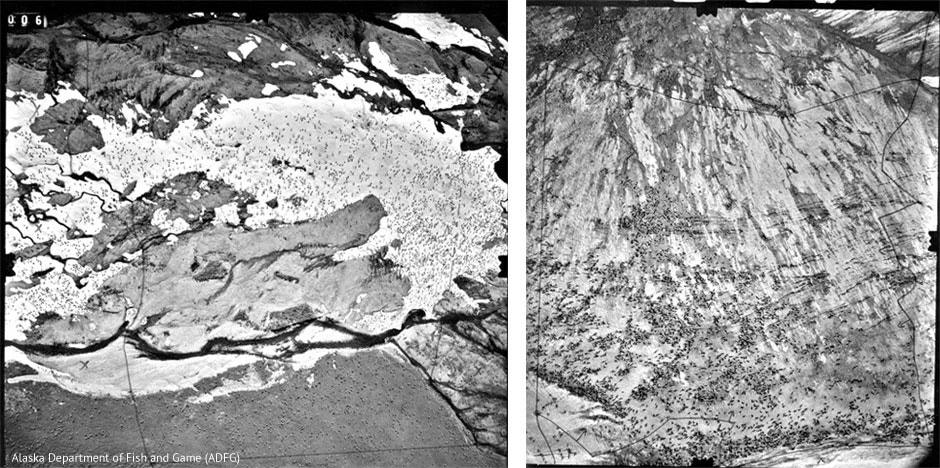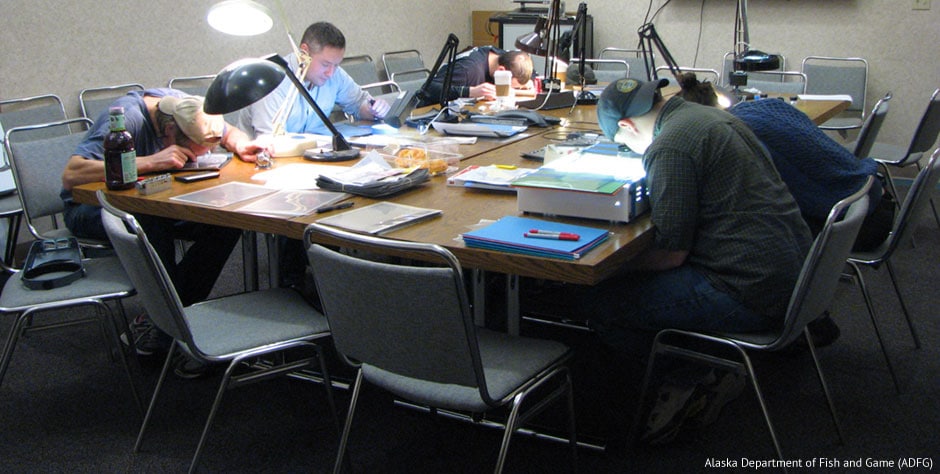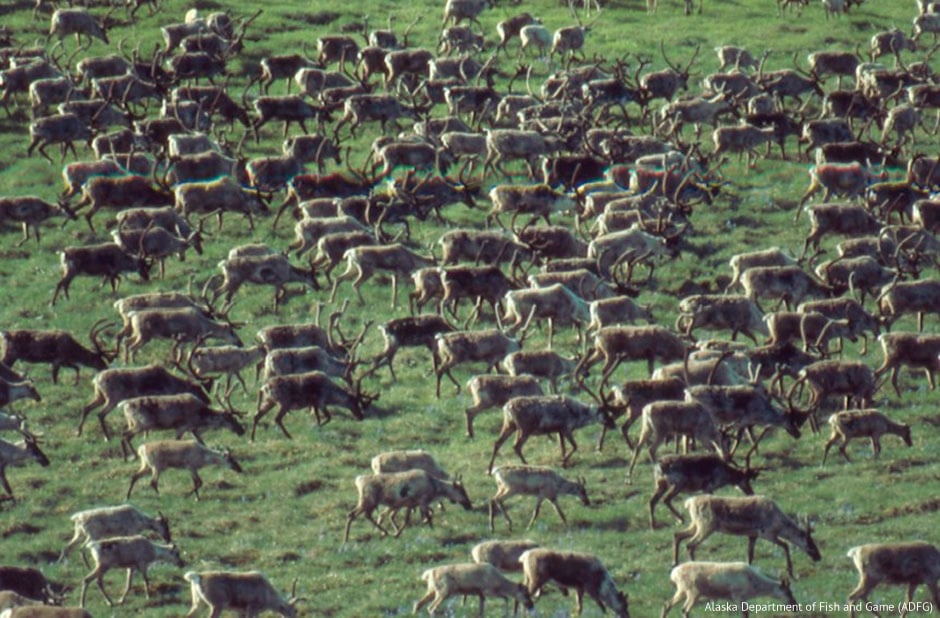Knowing the overall number of caribou, or the population, and how that number changes over time is important for managing the herd, particularly when it comes to harvest. To monitor population, researchers try to conduct a census of the Porcupine Caribou herd every two years. Since the first census was conducted in the early 1970s, the herd has shifted between 100,000 and 200,000 animals.
No one is sure what causes the herd to get smaller or larger, but ongoing monitoring programs indicate that changes in adult survival might be one of the things that affects the population the most.
Why do we collar caribou?
Click to find out!

